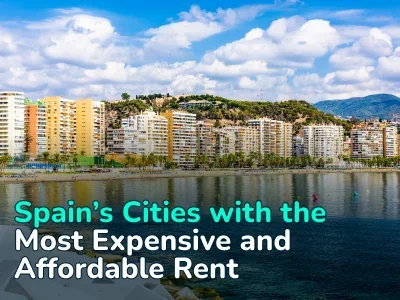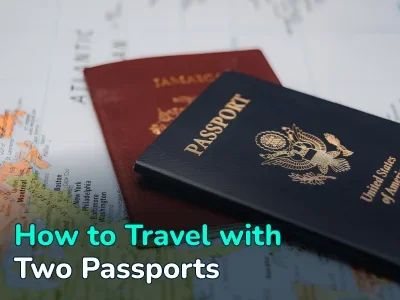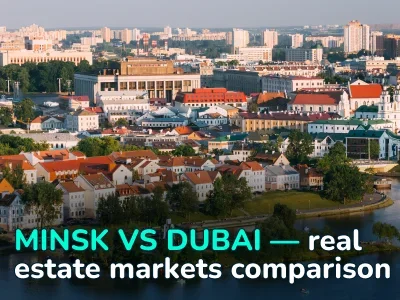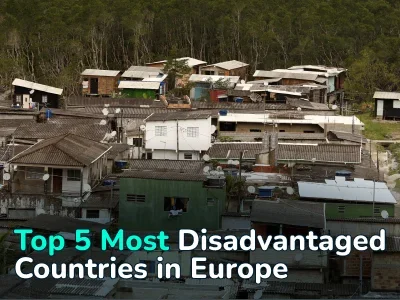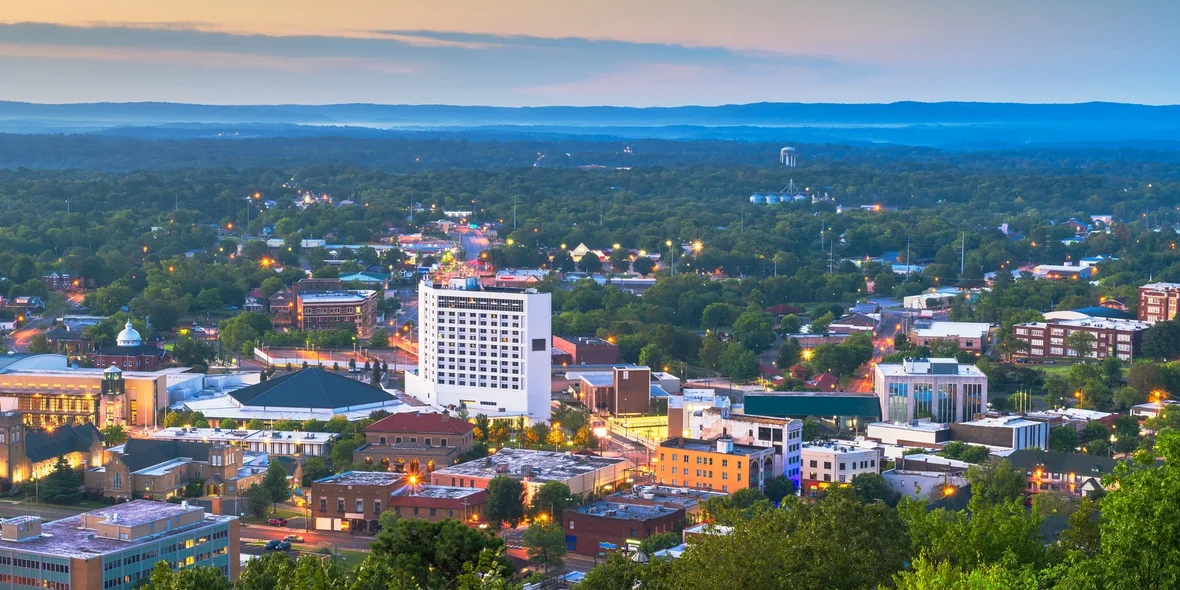
US States That Pay up to $25,000 for Relocation: a Guide
In 2025, several U. S. states and cities are offering financial incentives to attract new residents. These programs — providing up to $25,000 in relocation payments, housing grants, or bonuses for remote workers — are designed to stimulate local communities and boost regional economies. Our article outlines which states are participating, how much money is available, and what requirements applicants must meet.
Why Are States Paying People to Relocate?
Many U. S. regions are facing chronic population decline. According to the U. S. Census Bureau, from 2020 to 2023, rural areas experienced a 0.7% decrease in population, while major cities grew by 0.4%. The primary causes are young people migrating to metropolitan areas in search of jobs and better living conditions, along with the aging of the local population.
The economic impact of depopulation is further compounded by a shortage of skilled professionals. In 2023, there was a 9% shortfall in teachers and a 7% deficit in healthcare workers, leading to school closures in rural counties and small-town hospitals being unable to provide full medical services.
This situation creates a vicious cycle: with fewer jobs, young people leave; without young people, demand for services drops, which drives further decline. In response, state governments have started offering financial incentives to attract new residents from other regions.
Overview of State Programs
The number of financial incentive programs is relatively small, especially considering the total number of U. S. states, 50. We will focus in detail on those regions that offer more than one relocation initiative. It’s important to note upfront that participation in these programs is only available to individuals with legal status in the U. S., whether through citizenship, a green card, or a work visa.
Arkansas
Arkansas offers programs to attract remote workers as new residents in three cities: Texarkana, Fort Smith, and West Memphis. Relocating can be financially advantageous, as the cost of living in Arkansas is below the U. S. national average. However, not all cities have well-developed infrastructure.
|
Program |
Amount |
Requirements |
|
Texarkana |
Up to $18,100 ($15,000 cash + bonuses, including a bike or kayak). |
Annual income of $100,000+, remote work, or self-employment |
|
Fort Smith |
Up to $12,500 ($10,000 cash + service discounts). |
Annual income of $75,000+, remote work, or self-employment |
|
West Memphis |
Up to $10,000 ($8,000 cash + coworking space access). |
Age 18+, annual income of $50,000+, remote work for a company outside the city |
Indiana
Indiana is actively working to attract new residents to both the suburbs of major cities—such as Noblesville near Indianapolis—and rural areas like Floyd and Greene counties. The programs offer payments to adults who work remotely, either self-employed or employed by out-of-region companies. Suburban areas offer comfortable living conditions, while in rural regions, only 78% of households have access to high-speed internet.
|
Program |
Amount |
Requirements |
|
Noblesville |
Up to $15,000 ($5,000 cash + memberships, event tickets). |
Annual income of $80,000+ |
|
Floyd County |
Up to $10,000 ($7,000 cash + service discounts). |
Annual income of $60,000+ |
|
Other cities (Greensburg, Bloomington, etc.) |
$5,000–$8,000 (cash + coworking space, services). |
Annual income of $50,000+ |
Iowa
Iowa offers financial incentives to attract new residents to towns such as Newton, Britt, and Pocahontas County. These programs target adult remote workers and homebuyers.
Iowa’s initiatives are especially appealing to residents of high-cost states like New York due to the low cost of living and generous benefits, such as free land. However, the requirement to build a home on the free lot in Britt entails an investment of at least $150,000—an amount that the incentive does not even cover by 10%. Additionally, high-speed internet is not universally available, though the crime rate in Iowa’s small towns is 22% lower than the national average.
|
Program |
Amount |
Requirements |
|
Get to Know Newton |
Up to $10,000 ($8,000 cash + welcome package). |
Annual income of $50,000+, purchase of a home priced at $240,000 or more. |
|
Britt, Pocahontas County, etc. |
Up to $5,000 + free lot (up to 0.5 acres). |
Annual income of $50,000+, commitment to build a home. |
|
Osage, Mason City, others |
$5,000–$8,000 (cash + services). |
Annual income of $50,000+ |
Illinois
Illinois offers financial incentives to attract new residents to Pittsfield, Jacksonville, and Grafton. These programs, like in other states, are aimed at adult remote workers. However, the grant amounts ($8,000—$9,300) are lower compared to other states and often fall short of covering the full cost of relocation, which averages around $12,000. In Jacksonville, the crime rate is 15% higher than the U. S. average. Local residents have expressed concern that the program’s budget diverts funds from essential infrastructure, such as road repairs.
|
Program |
Amount |
Requirements |
|
Pittsfield |
Up to $9,300 ($7,000 cash + tax incentives, club memberships). |
Annual income of $50,000+ |
|
Jacksonville |
Up to $9,000 ($6,500 cash + coworking space, event tickets). |
Annual income of $60,000+ |
|
Grafton |
Up to $8,000 ($6,000 cash + free access to tourist attractions). |
Annual income of $50,000+ |
Kansas
Kansas offers several financial incentives to attract new residents, primarily targeting rural areas in the northwest part of the state. These programs stand out for their variety, including free land offers, but the amounts vary significantly, from nearly $11,800 in Oberlin to just $5,000 in Lincoln. Additionally, crime rates in Kansas differ widely: Oberlin reports a crime rate 30% below the national average, while Topeka’s is 25% above.
|
Program |
Amount |
Requirements |
|
Oberlin |
Up to $11,800 ($9,000 cash + discounts, club memberships). |
Annual income of $50,000+, remote work for an out-of-region employer. |
|
Neodesha |
Up to $6,800 ($5,000 cash + memberships). |
Annual income of $50,000+, remote work or self-employment, relocation within 6–12 months, 1-year minimum stay. |
|
Lincoln |
Up to $5,000 + free lot (14,000–35,000 sq. ft.). |
Annual income of $50,000+, remote work, commitment to build a home. |
|
Choose Topeka |
Up to $10,000 ($8,000 cash + relocation assistance). |
Annual income of $50,000+, remote work for a company based outside the region. |
Kentucky
Kentucky offers relocation incentives primarily in rural areas such as Mayfield (in the western part of the state) and towns in the Appalachian region (eastern and southwestern Kentucky). The grant amounts are moderate, but the annual income requirements are relatively high, particularly in Mayfield. Conditions are more challenging in the Appalachian towns, where the incentive is lower ($5,250) and the poverty rate reaches 25%, contributing to a more difficult crime situation in the region.
|
Program |
Amount |
Requirements |
|
Mayfield |
Up to $8,800 ($6,000 cash + relocation assistance, memberships). |
Age 18+, annual income of $100,000+, remote work for a company outside the area. |
|
Appalachian towns (Hazard, Pikeville, etc.) |
Up to $5,250 ($4,000 cash + tax incentives, music lessons). |
Age 18+, annual income of $60,000+, remote work or self-employment. |
Michigan
Michigan offers financial incentives to attract new residents to the cities of Muskegon and Jackson. The grants available in Jackson and Muskegon are relatively generous but come with significant conditions. First, in Jackson, applicants must earn at least $70,000 annually. Second, they must purchase or build a home, which costs a minimum of $120,000 by the most conservative estimates. Additionally, Jackson has a crime rate 45% higher than the national average.
In Muskegon, the situation is more specific: the $15,000 incentive is available only to certified teachers and school support staff. Remote workers can receive a maximum of $7,200.
|
Program |
Amount |
Requirements |
|
Welcome Home Scholarship (Muskegon) |
Up to $15,000 ($12,000 cash + educational resources). |
Certified teacher or support staff working in Muskegon public schools. |
|
Muskegon (Remote Workers) |
Up to $7,200 ($5,000 cash + coworking space access). |
Annual income of $50,000+, remote work for an employer outside the region. |
|
100 Homes Program (Jackson) |
Up to $25,000 (toward down payment + bonuses). |
Annual income of $70,000+, remote work, purchase or construction of a home. |
Additional Relocation Incentive Programs:
- Oklahoma. Oklahoma offers the Tulsa Remote program, which provides up to $10,000 to remote workers who relocate to Tulsa. The payment is issued either in monthly installments to cover rent or as a lump sum after purchasing a home. Eligible applicants must be at least 18 years old, employed remotely by an out-of-state company, and earn a minimum of $50,000 per year. Relocation to Tulsa must occur within one year of program acceptance, and participants must reside in the city for at least one year.
- West Virginia — Ascend WV. Ascend WV offers $12,000 in cash to new residents of Greenbrier Valley, Morgantown, Elkins, the Eastern Panhandle, or the New River Gorge region. Applicants must be 18 or older, work remotely for an employer located outside West Virginia, earn at least $50,000 annually, relocate within six months of acceptance, and stay in the chosen region for a minimum of one year.
- Alabama. In northwestern Alabama, the Remote Shoals program targets remote workers relocating to the Shoals region (Colbert and Lauderdale counties). Eligible candidates must earn a minimum income and work remotely for an employer outside the region. The program operates in phases—the latest application round closed on March 31, 2025. Dates for the next round have not yet been announced.
- Alaska. Alaska’s Permanent Fund Dividend (PFD) is a unique program that distributes a portion of the state’s oil revenue to all residents who have lived in Alaska for a full calendar year. In 2024, the payment was $1,702 per person. Although not officially a relocation incentive, the PFD does not impose income or employment-type requirements and serves as a passive financial benefit for those who choose to reside in the state.
What You Should Know Before Moving
Most relocation incentive programs target remote employees or self-employed professionals whose employers are located outside the program region. The minimum annual income threshold of $50,000 is not a major barrier, as the average salary for remote workers in the U. S. is around $62,000. However, when income requirements reach $70,000 or higher, approximately 60% of remote professionals become ineligible.
All participants must relocate to the designated area within 6–12 months of being accepted into a program and reside there for at least one year; otherwise, the grant may be revoked. Renting a home is usually sufficient, but some programs impose mandatory home purchase or construction requirements, which can raise relocation costs to at least $120,000 — an amount far exceeding what most grants cover.
The application process typically requires submission of several documents: a work contract, proof of income, and verification of legal residency status in the U. S. Application review can take 2–3 months, and many programs have limited capacity. Freelancers without stable income often struggle to qualify, as they may lack both consistent contracts and documentation that proves they meet income thresholds.
In Summary
These programs often create an illusion of an easy move, but their practical impact is limited. While some initiatives deliver visible short-term results, they come with major drawbacks.
- First, the eligibility criteria are strict, with minimum income levels ranging from $50,000 to $100,000 and a requirement to work remotely for an out-of-region employer.
- Second, rural infrastructure remains underdeveloped: only 65% to 76% of households in states like West Virginia, Kansas, and Iowa have access to high-speed internet.
- Third, grant amounts often fall short of covering actual relocation costs, especially in places like Alaska, where the cost of living is 28% above the national average.
These programs have also faced backlash from local communities, who argue that funds should be redirected to essential local services. In 2023, this dissatisfaction led to public protests in Mayfield (Kentucky), Muskegon (Michigan), and Neodesha (Kansas). Economists remain skeptical as well: estimates suggest that 15–25% of program participants leave the area after one year without making a lasting contribution to the local economy, raising questions about the long-term effectiveness of paying people to move.
Author
I write informative articles about real estate, investments, job opportunities, taxes, etc.











